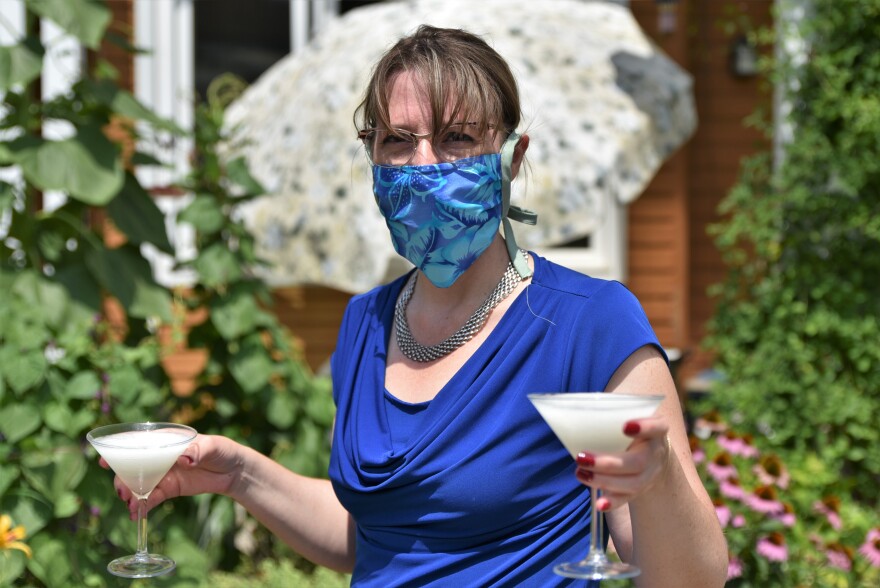A shaken daiquiri is really simple to make. Making a frozen daiquiri at home can be done, but there’s a trick to making it right as Tammy Coxen of Tammy’s Tastings shows us.
“If you just take the regular ingredients of a daiquiri: rum, lime juice, simple syrup and put them in a blender and add some ice...When you finish mixing that up, the results going to be kind of watery,” Tammy explained.
The way to make your own slushy daiquiri at home takes just a little bit of advance prep as Tammy learned.
“I have been doing these Tuesday night Facebook Live talks and I decided I would explore the frozen daiquiri. So I went to my favorite science and cocktails guide, which is a book called Liquid Intelligence by a guy named Dave Arnold. And he figures out how to science your cocktail,” Tammy said.
While she tried different variations with her Facebook live audience, she says a favorite was clear.

“The idea here is that we're freezing the ingredients in advance, and then when it's time to make your frozen daiquiri, you just dump them into a blender, add some fresh lime juice, blitz it up and you're good to go,” she explained.
You put water, rum (we used Iron Fish), simple syrup, and a couple of pinches of salt into a container. It can be a freezer bag or something like that. Then put it in the freezer a day (or days) ahead of time. Add the lime juice to the mix when you’re ready to put it in the blender.
Why salt?
“Dave Arnold does this in every cocktail that he makes because the salt helps balance the other ingredients,” Tammy said.
Because alcohol doesn’t freeze easily, here’s a warning about your freezer.

“If you have a freezer that can't quite get to that freezing point, even on the watered down rum, then you just add the lime juice just a couple hours beforehand and then it will freeze because you're reducing the alcohol content even further,” Tammy explained. You don’t want to put lime in the mixture too early because the sooner lime juice is used the better. It gets bitter with time.
This slushy daiquiri is so much better than what you might have tasted before because it doesn’t use artificial ingredients as so many daiquiris served from slushy machines do.
Below are recipes for a shaken daiquiri and the slushy variety you make ahead of time.
Daiquiri
2 oz white rum
3/4 oz lime juice
1/2 oz simple syrup
Combine all ingredients in shaker with ice. Shake and strain into
cocktail glass.
Ultimate Frozen Daiquiri (serves 2)
4 oz white rum
4 oz filtered water
1 1/2 oz simple syrup
2 pinches salt
1 3/4 oz freshly squeezed lime juice

Combine all except lime juice in a wide mouthed plastic container or a ziploc bag. Freeze for a minimum of several hours, until mostly solid.
When ready for a daiquiri, combine with lime juice in a blender and blend just until mixed.
Note: if your freezer is not cold enough to freeze the mixture, all lime juice no more than 3-6 hours before you plan to serve the drink, and then it should freeze.
Also note: This is extremely drinkable and extremely potent! As the Dave Arnold, creator of the drink says: pace yourself!
Tammy Coxen and Lester Graham are the authors of Cheers to Michigan: A Celebration of Cocktail Culture and Craft Distillers from the University of Michigan Press. The book is based on the Cheers! episodes heard on Michigan Radio.





